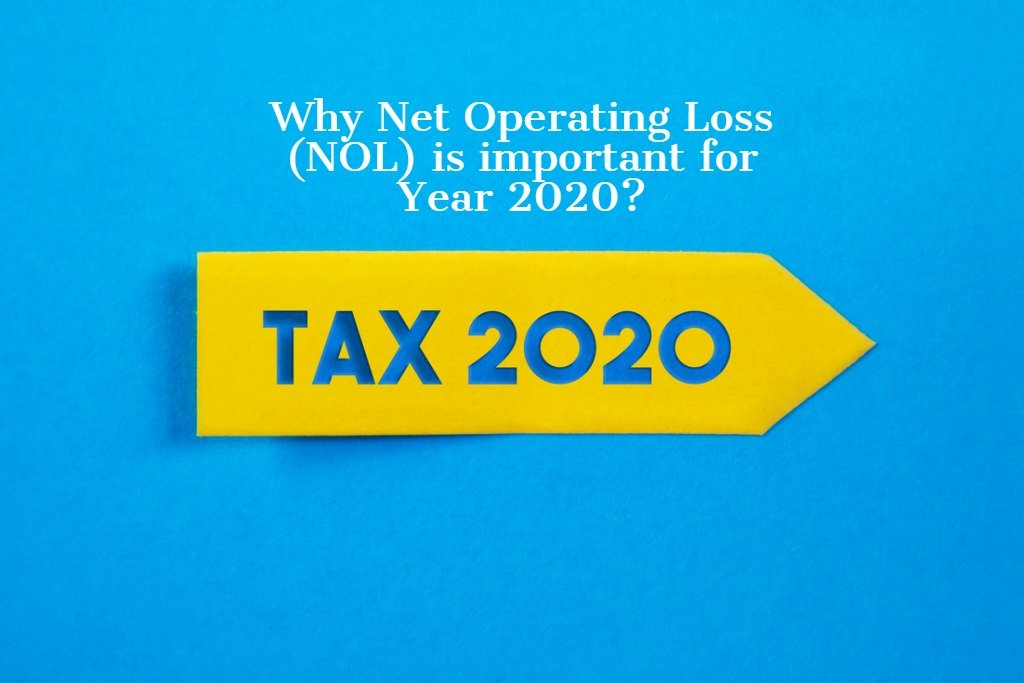Tax Planning: Why NOL is important for year 2020? – By Syed Nishat

Why NOL is important for year Tax Year 2020? – By Syed Nishat
Net Operating Losses, the CARES Act, and Your Taxes in 2020
In the tax and accounting aspect of your business, you have likely come across the concept of NOL, or net operating losses. Net operating losses occur when business activity for a particular year results in an overall net loss, meaning that the business’ tax deductions exceed the business’ taxable revenue over a given tax period. To reduce tax liability in the future, this NOL can be carried forward to future years to offset income.
For example, if a business owner had a $50,000 NOL in 2017, the loss amount could be carried forward to the 2018 tax period where there was a $50,000 positive revenue. These two amounts, one a loss and one a gain, would effectively cancel one another out, meaning the total tax liability for 2018 had reduced to zero. The 2017 Tax Cuts and Job Act lifted the previous time limit on NOL carryforwards from the 20 years that had been allowed, though it also imposed a limit of 80% of taxable income in any given tax period that could be covered by the loss carried forward.
Cares Act and NOL:
This year, as a result of the pandemic that created problems for individuals and businesses alike, the Coronavirus Aid, Relief and Economic Security (CARES) Act made changes for the 2020 tax period that may have a large impact on businesses’ taxes.
The CARES Act, signed in March 2020, included tax legislation that affects net operating losses and how they can be applied to business taxation. Under the CARES Act, in addition to the unlimited carryforward for tax years after 2017, there is also the option for a carryback of NOL to previous years. This temporary allowance gives business owners a maximum Five-Year Carryback for NOL incurred during any tax period after 12/31/2017 and before 1/1/2021. In addition, the 80% limit was also lifted through the 2020 tax year. Taken together, these benefits mean a business owner can potentially claim a refund from previous years, which can be especially helpful amid the COVID-19 challenges to the economic landscape.
So, how do I get refund?
This refund opportunity is only available for the 2020 tax year, as after 12/31/2020, the previous limitations on NOL will be reinstated, re-establishing the 80% limit and disallowing carrybacks. However, through their duration, the changes can have a great effect on the cashflow of a business as well as other benefits, including significant tax savings. Increasing cash liquidity is an immediate benefit to a business, and it could prove vital in heling a small business remain afloat in difficult times. The specific forms a business must complete to request a refund will vary depending on the entity type, however any business applying must file the return first before generating the NOL for the year. There is a six-month extension allowed by the IRS for those requesting a potential refund to carry back an NOL, as additional amendments may be required.
Let’s see how it works in practice:
As an example of a way to maximize tax savings under the new regulations, consider a real estate owner who, through a cost segregation analysis, was determined to have a net operating loss of $250,000 for 2020 through depreciation of the owned properties. Over the previous five years, however, there was a taxable income of $50,000 per year from rent gathered from the properties. The $200,000 NOL for 2020 can be broken up and applied to the previous years, in order back from 2019 to 2018, etc., which will balance out the income from previous five years and reduce the tax liability for each allowable year to nothing. Through amended tax returns, the real estate owner will have regained the taxes initially paid out, as the NOL and the taxable revenue will have broken even.
What is the importance of NOL in 2020?
While these temporary relaxations of NOL limitations may benefit a business owner by increasing cashflow to a business and making the most of tax deductions, the regulations and filings are complex to understand. Furthermore, each business situation is unique, and to make the most of any tax advantage, it is best to work with a financial professional who will take the time to fully get to know a business’ specific circumstances. Since the changes resulting from the CARES Act that affect NOL are only available in 2020, it is best practice to meet with an experienced financial advisor soon to see how they can affect tax planning and help maximize the effect of these rules for a business.
Schedule a complementary consultation!
“Securities America and its representatives do not provide tax or legal advice; therefore it is important to coordinate with your tax or legal advisor regarding your specific situation.”